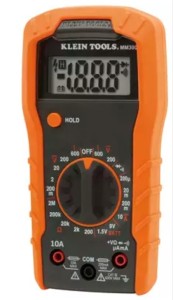Consider the Secondary Ignition Physical, Part 1, to be a quick review of some Secondary Ignition basics prior to the Colonial Region Tech Meeting in June at the Nichols. Bruce intends on exposing Region members to the Colonial Region Sun Analyzer to diagnose portions of the Secondary Ignition system on a Region member’s vintage car.
Vector files for this first part of the basic review discussion:
EngineAndIgnitionPhysical (.doc)
EngineAndIgnitionPhysical (.pdf)
Content of the files is as follows:
“Engine And Secondary Ignition Physical” restoration article is inspired by the upcoming May 2019 “Tech Event” being hosted by the Nichols at their home:
http://www.plymouthcarclub.com/event/may-2019-region-event/
Based on the event description Bruce intends on utilizing the Sun Analyzer at the Tech Event:
http://www.plymouthcarclub.com/2016/01/ignition-diagnostic-testing/
Understanding basics before using the Sun Analyzer might be helpful in answering questions such as: is the value being measured 1) good, 2) deteriorating, or 3) unacceptable. Shop manuals from the vintage autos rarely give enough info to know the answer to those questions for the Sun Analyzer data so it’s up to the mechanic to figure it out for your vehicle and equipment = the need for data.
Humans may get physicals for themselves each year that measure important values for their bodies. A doctor can compare those values over time to see a trend and take action before some life changing event occurs. The Engine And Secondary Ignition Physical looks at one aspect of your vintage auto to enable the same type of analysis.
Attached is the spreadsheet used on a 65 Dart with slightly modified Slant Six engine and ignition equipment. Data is gathered yearly for the ignition and engine to determine if key values are varying over time to allow for analyzing and ultimately attempting to avoid an unscheduled surprise. Values include secondary ignition, hot idle, compression, fluid level, and belt tightness. Variations in subsequent yearly values from these base line data points can help diagnose the onset of deterioration requiring maintenance to a specific piece of equipment.
Example: consider the secondary ignition wire resistance (ohms/inch). This can largely impact secondary coil voltage altering the life of related components and engine performance. The Sun Analyzer can point to a high wire resistance issue (see Sun Analyzer Manual page 26) if base line data for your engine is known:
http://www.plymouthcarclub.com/wp-content/uploads/2016/07/1215SunOwnerManual.pdf
However a VOM meter such as below also allows each wire to be detailed tested for resistance:
Going thru examples for each piece of data will be covered in subsequent restoration articles.
The take away from this article is suggested as: A) Know the baseline data for your engine and secondary ignition for your unique ride, B) Compare data over time, C) Analyze data over time for trends to pinpoint specific maintenance needs.
Note the 65 Dart plug wires in the below spreadsheet have excessively high resistances and the secondary wire voltages in the 16kv to 20kv range are excessive (should be closer to 10kv)…….it appears the plug wire resistances may be contributing, need further examination and/or replacement before hard starting and/or coil deterioration starts occurring…….it goes on the list of things to do soon.
Dart Engine And Ignition Physical Spreadsheet:

